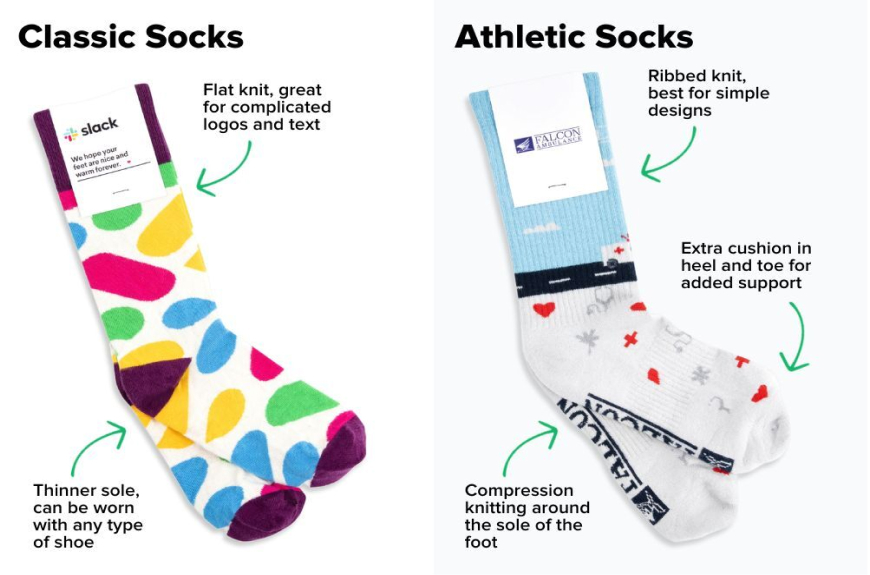For those managing diabetes or circulatory issues, choosing the right socks can make a significant difference in comfort and health. While diabetic socks and compression socks may seem similar at first glance, they serve different purposes and have distinct features. Understanding these differences is crucial for selecting the appropriate footwear for your needs.
Purpose and Design
Diabetic socks are specifically designed to reduce the risk of foot injury and provide comfort for those with diabetes. They typically feature seamless construction to prevent rubbing and blisters, moisture-wicking materials to keep feet dry, and non-binding tops to avoid constricting circulation. These socks aim to minimize pressure points and reduce the risk of foot ulcers.
Compression socks, on the other hand, are engineered to apply graduated pressure to the legs and feet. This pressure helps improve blood circulation, reduce swelling, and prevent blood clots. They're often used by athletes, travelers, and those with various circulatory issues. The level of compression can vary, and it's important to choose the right pressure based on individual needs and medical advice.
Material and Construction
The materials used in diabetic socks prioritize softness and breathability. Common fabrics include bamboo, merino wool, and specially treated cotton blends. These materials help prevent moisture buildup, which can lead to fungal infections. Diabetic socks often incorporate antimicrobial properties to further protect against foot-related complications.
Compression socks typically use stronger, more elastic materials like nylon and spandex to provide the necessary pressure. The weave of these socks is designed to create graduated compression, with the highest pressure at the ankle, gradually decreasing up the leg. This construction helps promote blood flow back to the heart.
Fit and Comfort
Diabetic socks are designed to fit comfortably without being too tight. They often feature extra cushioning in high-impact areas like the heel and ball of the foot. The non-constricting top band ensures that circulation isn't impeded, which is crucial for those with diabetes who may have reduced sensation in their feet.
Compression socks, by nature, have a snugger fit. They're designed to hug the leg closely to provide the necessary pressure. While this tightness is beneficial for circulation, it may not be as comfortable for extended wear, especially for those with sensitive skin or neuropathy. Proper sizing is crucial for compression socks to ensure they provide the intended benefits without being too restrictive.
Health Benefits
The primary health benefit of diabetic socks is protection. By reducing friction, managing moisture, and minimizing pressure points, they help prevent foot injuries that can be particularly dangerous for diabetics. Some diabetic socks also feature padding or gel inserts to provide extra cushioning and support.
Compression socks offer different health benefits, primarily focused on improving circulation. They can help reduce leg fatigue, prevent swelling, and lower the risk of deep vein thrombosis. For this reason, they're often recommended for long periods of sitting or standing, such as during air travel or for those with desk jobs.
When to Use Each Type
Diabetic socks are ideal for daily wear for individuals managing diabetes, especially those with neuropathy or a history of foot problems. They're suitable for various activities and can be worn throughout the day to protect the feet.
Compression socks are typically worn for specific purposes or durations. Athletes might use them during and after exercise to improve performance and recovery. Travelers often wear them on long flights to prevent swelling and blood clots. Some people with circulatory issues may be advised to wear compression socks regularly, but it's important to follow medical guidance on usage.
Wrapping Up
While both diabetic socks and compression socks offer important benefits, they serve different primary purposes. Diabetic socks focus on protection and comfort, while compression socks prioritize improving circulation. For individuals managing diabetes, diabetic socks are generally the safer choice for everyday wear. However, in some cases, a healthcare provider might recommend compression socks for specific situations. As with any medical-related decision, it's best to consult with a healthcare professional to determine the most appropriate option for your individual needs. Whether you opt for diabetic socks, compression socks, or other specialized footwear, choosing the right socks can play a crucial role in maintaining foot health and overall well-being.


